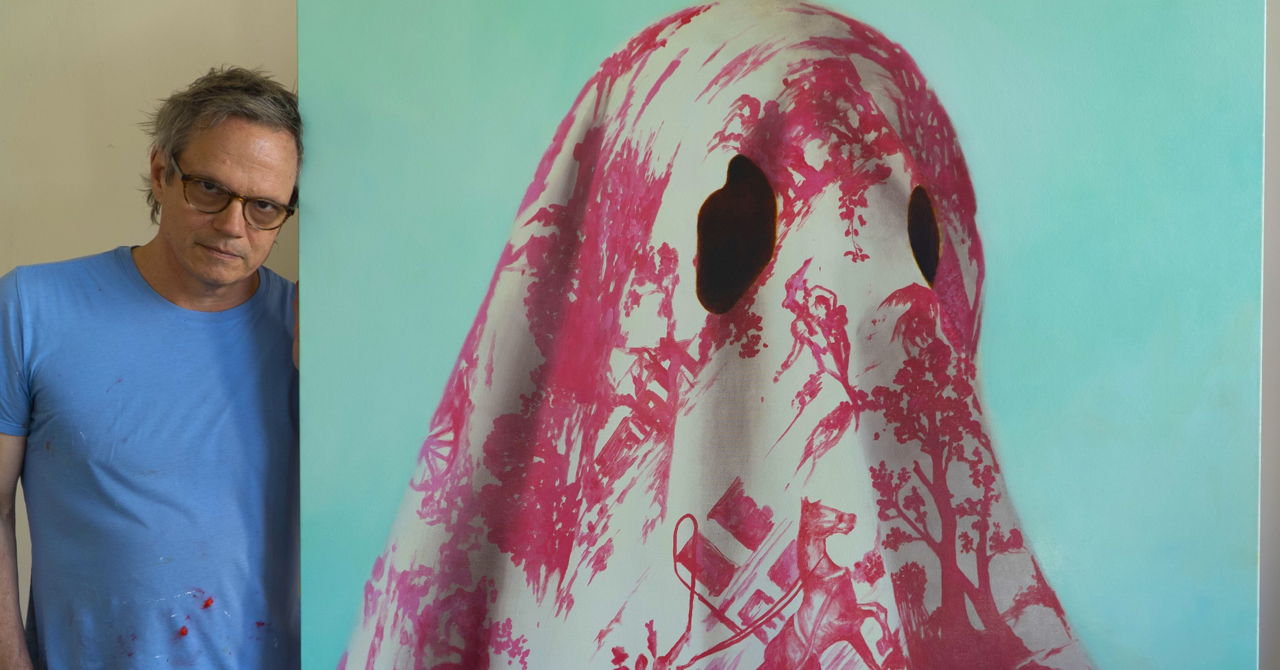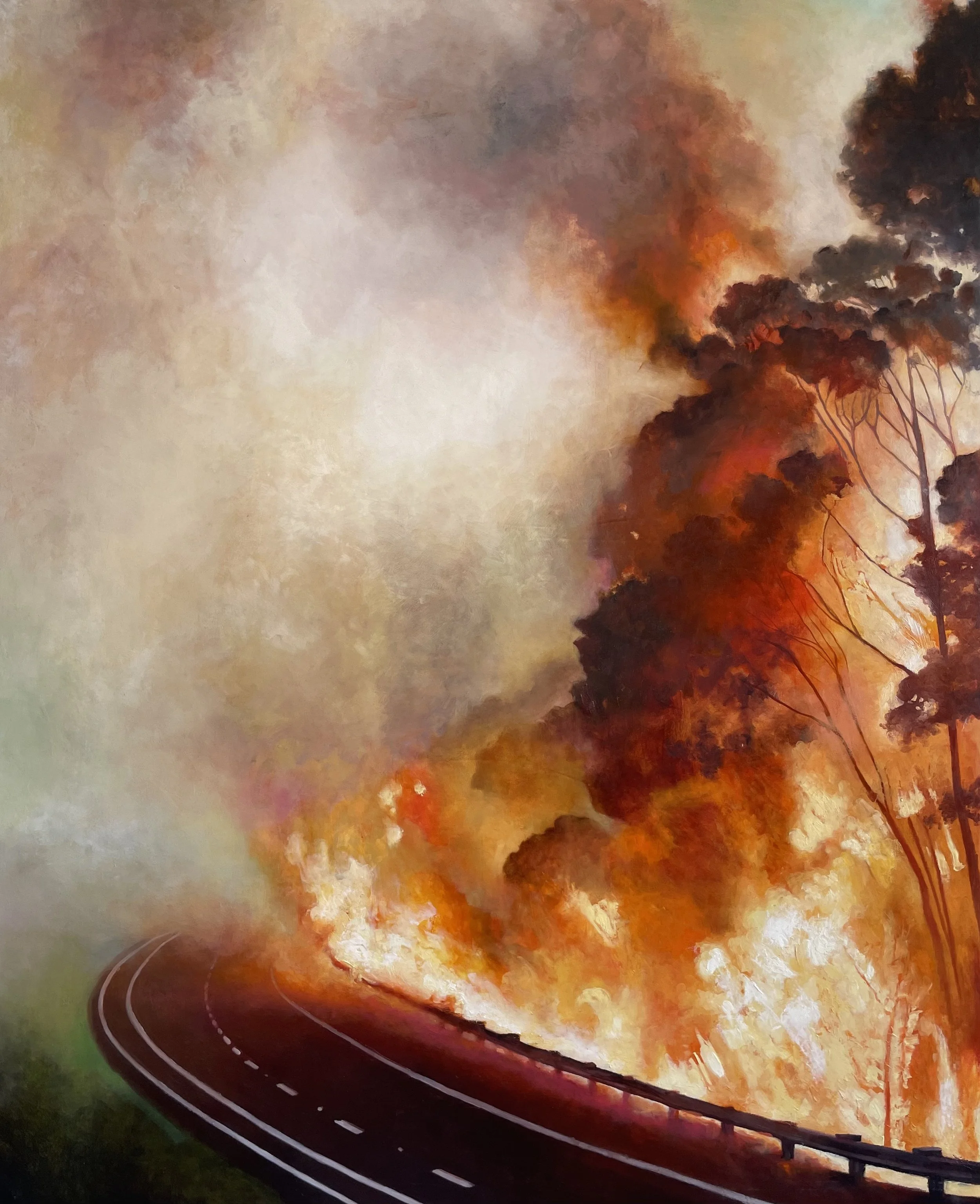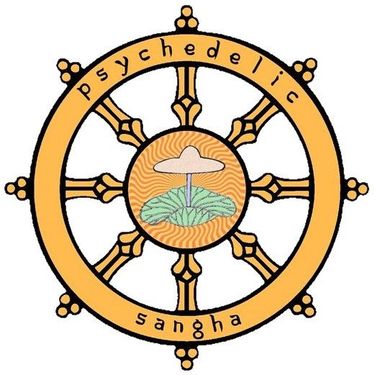Be Not Afraid: Gallery Talk and Meditation
Up to Free for members

Contemporary representational painting must be honest. This world needs us to take a good hard look at it. Our landscapes are under threat and often on fire. We cannot pretend things are other than how they are, but we can hope to fix things for the people that come after us.
-Michael Prettyman
Psychedelic Sangha presents, "Be Not Afraid: An Immersive Gallery Talk and Meditation with artist Michael Prettyman"
Please join us on September 11th for an immersive sensory experience featuring guided meditation by Doc Kelley and gallery talk with artist Michael Prettyman.
We thank VISIONHEIRS for curating this sensory rich unique presentation of Prettyman's work.
And also to Thinkolio for helping us get the word out!
..........................
Michael Prettyman is an artist and scholar of Eastern Religions. He holds a Masters Degree in Theology from the Harvard Divinity School and teaches on the subject of religion and the arts, Asian Religion and philosophy at Hunter College and the CUNY Graduate Center in New York. He has been a visual artist for twenty years, with gallery shows in New York City, Hong Kong and Barcelona. He has exhibited paintings, drawings and sculptures at the United Nations General Assembly, The American Museum of Natural History, the Tsvetaeva Museum of Art in Moscow and the National Museum of Art in Almaty, Kazakhstan and has paintings in the permanent collection of each. He has studied the forms of mediation and sacred artmaking in Buddhist and Christian monasteries in Italy, Nepal, India and the United States.
Michael’s scholarly work in comparative religion dovetails with his practice as an artist. He is convinced that the practice of art making is itself a religious activity, as is the viewing of it. He writes, “The sacred, mythological past need not be inaccessible to us- it is at our fingertips because it is within us, and if we can find it we approach our common humanity. It is only through art making I am able understand these realities in a way that has blood and immediacy in it.”
Artist statement for "Be Not Afraid: Smoldering Ghosts and the Landscape at the End of the World"
I have always suspected there is more to this world than meets the eye. Shakespeare put this best when he had Hamlet say, “There are more things in heaven and earth, Horatio, than are dreamt of in your philosophy.” As long as there have been human beings, there have been those of us who sense a kind of fabric in things that divides this world from another deeper one. Some of us can see right through this veil- but most of us are just scared of it and what it is hiding. Things scare us only when we refuse to look at them and then they marinate in fear and ignorance.
I grew up in the pine forests of the Florida panhandle - think of surfboards and pickup trucks - this is more Alabama than Miami. Way back in the woods there was an old white wooden church I used to walk by on my way to go fishing. The favorite hymn sung in that church was an old Catholic one called Be Not Afraid. “Be not afraid, I go before you always” was the chorus I would hear ringing out from the choir in a kind of off key but lusty wave of sound like a powerful wind.
I was reminded of this later in life, when I spent time in India and Nepal looking for answers to the confusion and pain life brings to all of us. The religions of the Himalayas often feature gods and goddesses that make some specific hand gestures called mudras, each of which has a specific meaning recognized in Buddhism, Hinduism and the ancient tradition of Bon. Mudras are ancient - they predate language and mean the same thing to people from all kinds of cultural backgrounds. One specific hand gesture you see a lot is often made by some of the scariest of the deities, the ones that dance the world into and out of existence. It’s made by slightly raising the right hand and bending it back at the wrist to show the palm. It means Fear Not. The deities are telling us to take a look at the world, but don’t be afraid of what you find.
The ancient Greeks had a word for this - mys. It’s where we get the words mystery, mystic and mysterious as well as mist. Mys means veil and that which hides behind the veil - behind the surface appearance of things. I look behind the veil by making paintings. Ghosts -and I mean little kid kind of ghosts, the ones in a sheet - seem like a category worth exploring. A ghost is a perfect representation of mys – it’s a piece of fabric, but it is animated by something from the other side.
I think about one of those machines in the NICU- the part of the hospital where they care for premature babies. There is a special isolation chamber where one of these tiny kids is placed to be kept safe from the world because they are so very vulnerable. The chamber has big rubber gloves built into it so the nurses can reach through and hold those little babies. Even though they have to be kept safe, they still need to be touched or they will die. How do those big rubber gloves look to this little creature just born too soon into the world? All that kid is going to see is this big thing looming at it. All the kid can see, in other words, is the veil. Behind that glove is a helping hand, and attached to that hand is creature concerned only with providing care. That creature, in turn, is a part of a world that is complex, wonderful and deadly beyond anything the kid can imagine. It will take that little human being years to form the ability to know even a part of what that world contains.
I think that might be how things are for all of us.
In Horatio’s philosophy, one particular kind of ghost is called a fetch; it is thought to be a ghost inside someone who is still alive. If that’s true, then everybody walking around right now has a ghost inside of them, a piece of them connected to everything that does not die. If that’s true, then our ancestors are still with us. If that’s true, then we always have the chance to make things new again.
Contemporary representational painting must be honest. This world needs us to take a good hard look at it. Our landscapes are under threat and often on fire. We cannot pretend things are other than how they are, but we can hope to fix things for the people that come after us. Shiva Nataraja dancing at the end of time says the same thing to us the choir in the church says, a kind of guarantee of happiness at the very end of things that comes when we look the world in the eye - be not afraid.



